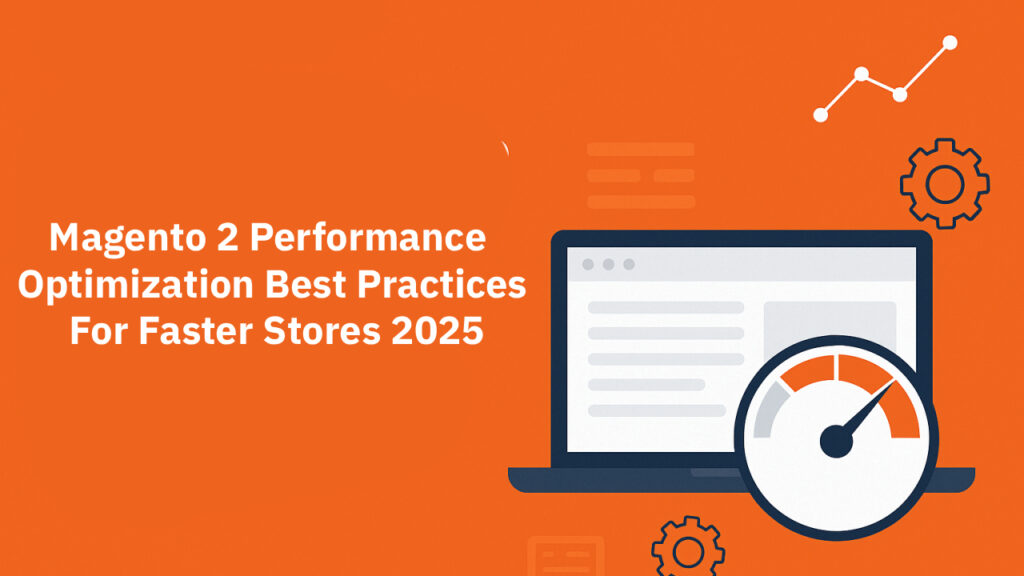In the fast-evolving e-commerce landscape, Magento 2 performance optimization is essential for delivering fast store loading and staying competitive. A one-second delay in page load can reduce conversions by up to 7%, impacting revenue and the ability to improve SEO rankings. This guide outlines the best practices for optimizing Magento 2 in 2025 to ensure efficient store operations and an enhanced customer experience for global shoppers.
By implementing caching, CDN, and database tweaks, businesses can create reliable stores that meet modern e-commerce demands

Why Magento 2 Performance Optimization Matters
A fast Magento 2 store minimizes bounce rates and delivers an enhanced customer experience, critical for retaining customers in a global market where mobile shopping accounts for over 60% of traffic. Optimization also helps improving SEO rankings by reducing load times, ensuring efficient operations during high-traffic events like holiday sales.
Best Practices for Magento 2 Performance Optimization
1. Enable Varnish Cache
Varnish Cache boosts fast loading by storing static content, reducing server load.
Features:
- Full-page caching for instant page delivery.
- Scalability for high-traffic periods.
- Compatibility with Magento 2.4+.
- Support for dynamic content updates.
Setup Steps:
- Enable Varnish in Magento’s admin panel (Stores > Configuration > Advanced > System).
- Configure Varnish via your hosting provider (e.g., Nexcess, AWS).
- Test cache hit ratio using Magento’s performance tools.
- Monitor load times with Google PageSpeed Insights.
2. Implement Redis for Session and Backend Caching
Redis enhances efficient operations by storing session data in memory.
Features:
- High-speed session management.
- In-memory storage for quick access.
- Scalability for thousands of users.
- Reduced database strain.
Setup Steps:
- Install Redis on your server (via SSH or hosting panel).
- Update Magento’s
env.phpfile to enable Redis caching. - Configure session storage in Magento admin.
- Test performance with tools like New Relic.
3. Use a Content Delivery Network (CDN)
A CDN reduces latency globally, contributing to a customer experience.
Features:
- Edge server caching for fast loading.
- Bandwidth savings for cost efficiency.
- Enhanced security with DDoS protection.
- Global content distribution.
Setup Steps:
- Choose a CDN provider like Cloudflare or Akamai.
- Integrate CDN with Magento 2 via admin settings.
- Configure caching for static assets (images, CSS, JS).
- Test load times using GTmetrix.
4. Optimize Database Performance
A well-maintained database supports efficient operations and faster queries.
Features:
- Index optimization for quick searches.
- Log cleanup to reduce bloat.
- Query caching for faster responses.
- Improved product filtering.
Setup Steps:
- Run
bin/magento indexer:reindexto optimize indexes. - Clean logs via
bin/magento setup:db-data:optimize. - Configure MySQL for query caching.
- Monitor database performance with Magento’s profiler.
Comparison of Magento 2 Optimization Tools
| Tool | Key Benefits | Cost | Suitability for E-commerce |
| Varnish Cache | Full-page caching, reduced load | Free | Ideal for fast store loading |
| Redis | Session and backend caching | Free | Great for high-traffic stores |
| CDN | Global content delivery | $10-$50/month | Supports enhanced customer experience |
| Database Optimization | Faster queries, less bloat | Free | Critical for efficient store operations |
Additional Optimization Tips
- Compress Images: Use tools like TinyPNG to reduce load times.
- Minify CSS/JS: Enable Magento’s built-in minification for faster rendering.
- Mobile Optimization: Ensure responsive design for mobile users.
- SEO Enhancements: Optimize meta tags to improve SEO rankings.
- Monitor Performance: Use Google PageSpeed Insights or GTmetrix to track performance.
Conclusion
Magento 2 performance optimization is vital for achieving fast loading, delivering an enhanced customer experience, and helping improve SEO rankings in the global e-commerce market of 2025. Tools like Varnish Cache, Redis, CDN, and database optimization ensure efficient operations and higher conversions. Start optimizing your Magento 2 store with Growsera for a faster, more reliable shopping experience.
FAQs about Magento 2 Performance Optimization
Why is performance optimization critical for e- ?commerce
Fast store loading reduces bounce rates and boosts conversions.
? How does Varnish Cache improve store speed
It caches pages for instant delivery, supporting efficient store operations.
? Can optimization improve SEO
Yes, faster load times help improving SEO rankings on search engines.
? Is Redis necessary for small stores
It’s beneficial for scaling and enhancing efficient store operations.
Boost Your Magento 2 Store with Growsera
Ready to achieve fast store loading and an enhanced customer experience? Try Growsera’s optimization services. Book a consultation to transform your Magento 2 store today!